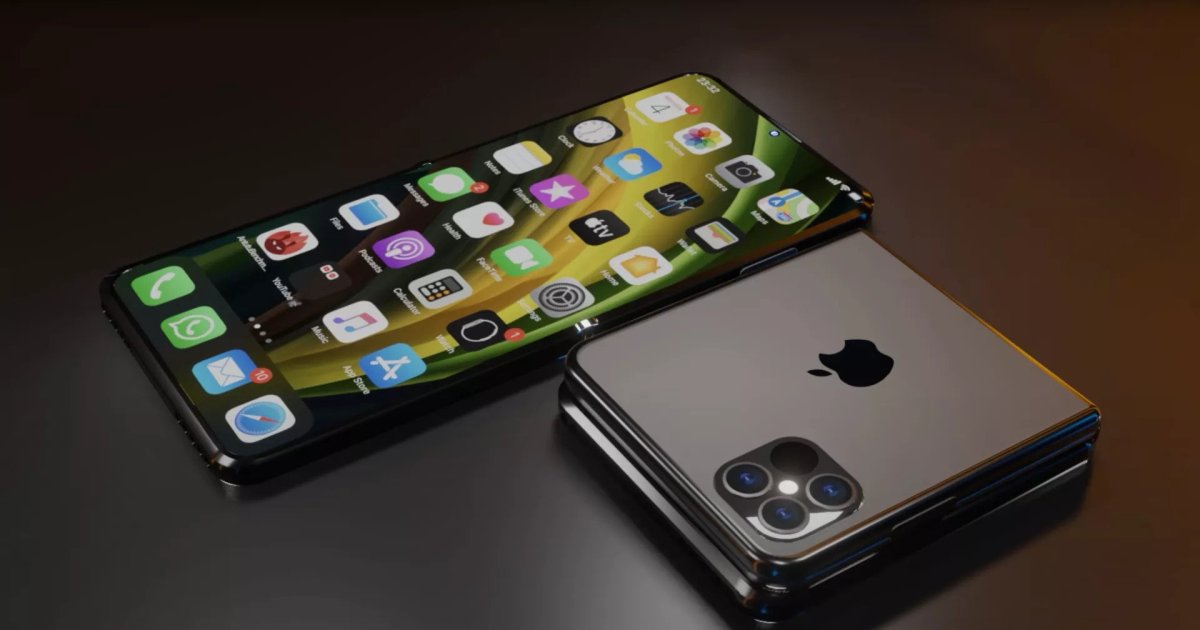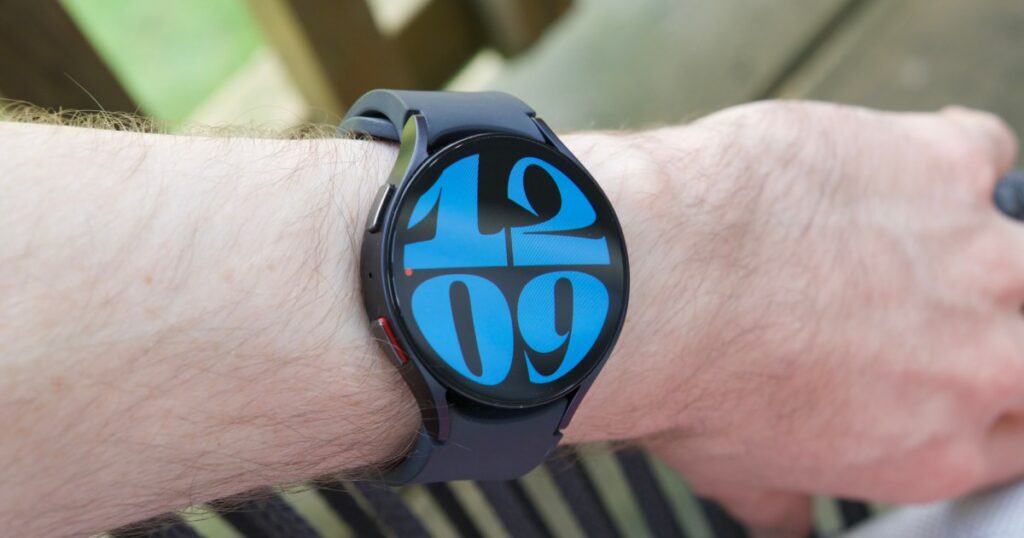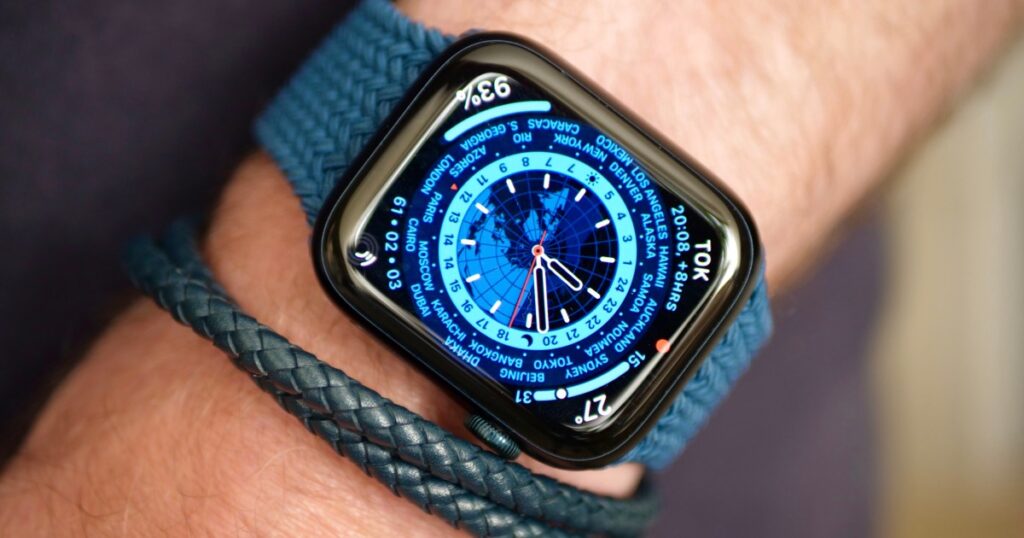In the past few years, Samsung has become one of the leading manufacturers of foldable devices, including the Galaxy Z Fold 5 and Galaxy Z Flip 5. Though it’s not the only brand making foldable devices, it offers the most mainstream and available options, especially in the U.S. That leads to the question of whether Apple will follow suit with a foldable iPhone — or even an iPad.
There have been long-standing rumors that Apple could be working on such a device, including a foldable iPhone, which we’ll call “iPhone Flip” for now. Apple’s a secretive company, so there may very well be at least some research and development taking place on such a device. But, of course, this continues to just be all speculation for now. From the latest news, rumors, and reports, here’s everything we know so far about Apple’s folding iPhone.
iPhone Flip: design and display

Very little is known about the design Apple may ultimately use for its first foldable iPhone. Samsung has covered the two most obvious styles with the Galaxy Z Fold 5 and Z Flip 5 — but that doesn’t mean Apple has to follow suit. Apple has filed dozens of patents hinting at designs for a foldable iPhone, but these contain so many possibilities that it’s anybody’s guess right now as to what direction the company will go in. They can’t all be right.
According to a February 2024 report from The Information, Apple has been researching and building prototype folding iPhones for at least five years or more. This corroborates previous reports that Apple has been developing and testing foldable OLED screens and hinges since at least 2017.
This latest report cites some individuals who have “direct knowledge” of the project, and it seems that two iPhone prototypes are currently in development and will allegedly fold widthwise in a clamshell form factor. Again, these are in very early stages of development, so don’t expect to see them in 2024 or even 2025 — the earliest possible launch time frame would be at least 2026.
The latest report also indicates that Apple has approached at least one supplier in Asia for the components required for these two foldable iPhone models, which would come in different sizes. But if the components do not meet Apple’s high standards, the foldable iPhone in development could also be canceled.

A foldable iPhone has always been a wild card for Apple, as its interest in such a product has fluctuated several times over the years. CEO Tim Cook supposedly asked designers and engineers about creating a foldable iPhone as early as 2018. Though he responded positively to a foldable iPhone demo with a 7-inch display, there are still concerns about the technical difficulties and durability issues.
Originally, the vision that Apple had for a foldable iPhone involved a display residing on the outside when the foldable is shut, but Apple engineers have expressed durability concerns with that particular design. Apple’s industrial design team also wanted to keep the thickness about the same as the current iPhones, even when closed, which would be impossible given what is currently offered for battery and display technology.
At some point around 2020, Apple paused work on a foldable iPhone and pivoted to a foldable iPad instead, which would be about the size of an iPad mini with an 8-inch display. The reasoning for this was that it could be thicker than a foldable iPhone, and users wouldn’t have to carry this in their pocket, so it didn’t need to be as durable.
Apple’s engineers are also trying to eliminate the possibility of a crease that forms in the middle of the display, which is a big problem for pretty much every foldable on the market right now. Apple also wants to make it so that the hinge can allow for a display that opens up completely flat, which wouldn’t interfere with the Apple Pencil working.
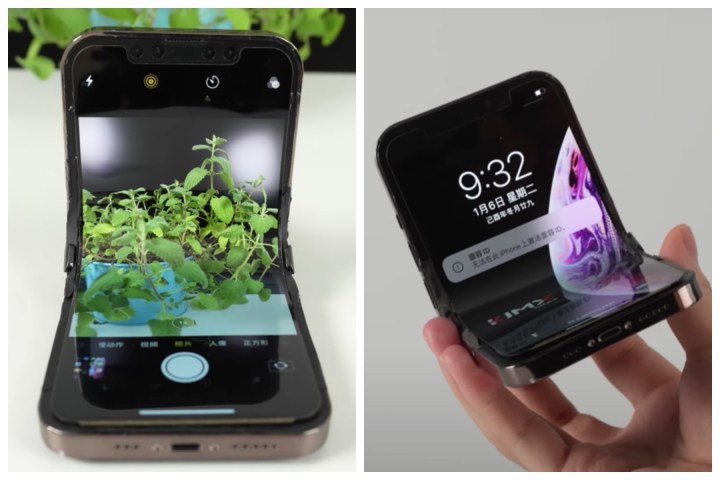
In 2016, LG began mass-producing foldable displays, indicating it planned to supply them to several companies, including Apple. That notion gained more steam in late 2017 when sources claimed Apple and LG had actively partnered to develop specific foldable display technology for a future iPhone — a partnership that’s still ongoing.
By 2020, Apple and Samsung Display had reportedly signed a deal in which the display maker would supply a “large number” of foldable display samples over a year to be used for testing foldable iPhone prototypes. At the same time, Apple had also reportedly begun testing hinges, looking for both a display and a hinge that could withstand up to 100,000 folds.
To put this in perspective, most laptop hinges are rated for somewhere between 30,000 and 50,000 folds. However, the Galaxy Z Fold 4 can survive at least 200,000 folds. We haven’t heard whether Apple has since raised its standard to match that of Samsung.

Apple also appears to be testing a few significantly different designs. Early in 2020, leaker Jon Prosser claimed to have seen a prototype device that used a two-screen design similar to Microsoft’s Surface Neo and Surface Duo rather than a single foldable display.
However, by the following year, Prosser said his sources had informed him that after completing the first round of hinge testing, Apple would be putting all its efforts into a clamshell foldable iPhone with a design similar to the Galaxy Z Flip. Prosser also claimed this iPhone would come in more “joyful” colors to target “more mainstream customers.”
Meanwhile, industry analyst Ming-Chi Kuo claimed that Apple’s first foldable would be considerably larger and might not even be an iPhone, per se. Instead, Kuo predicted an entirely new class of devices with a 7.5 to 8-inch display that would blur the line between the iPhone and the iPad. Unlike Prosser, Kuo doesn’t claim to have seen any examples of this device.
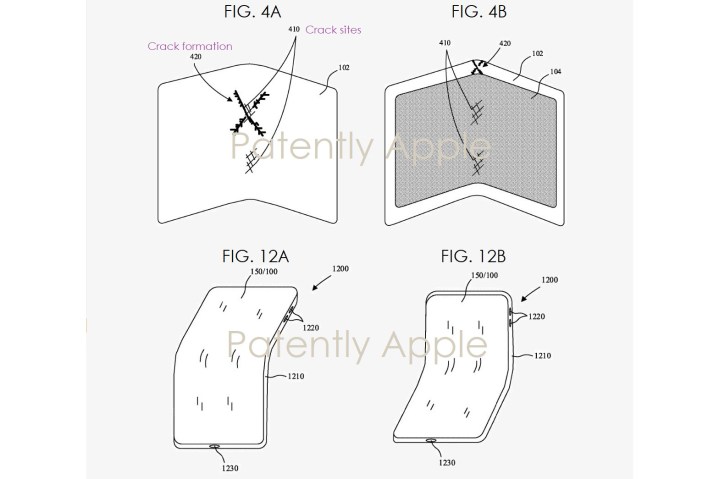
It’s worth noting that although Prosser has often been correct about Apple’s product release dates, he has a much less reliable track record when it comes to Apple products since he relies primarily on sources who claim to have inside information on what’s going on inside Apple. Kuo’s predictions usually come from the other direction, as he looks at trends within Apple’s supply chain and the type of components in demand.
Of course, like Samsung, Apple may have two devices in the pipeline: A clamshell foldable “iPhone Flip” that’s designed for fun, along with a more serious business-class “iPhone Fold” or “iPad Fold.”
A new patent has been granted for Apple, which would allow for touch-sensitive control areas, including solid-state buttons, on the surface of the current iPhone design, as well as a folding one in the future. With this patent, Apple could add touch sensitivity to every side and edge of the iPhone, foldable or not. The name of this new patent is “Electronic Devices With Display And Touch Sensor Structures,” which shows that it would be convenient to tap, swipe, or just touch an iPhone to control it.
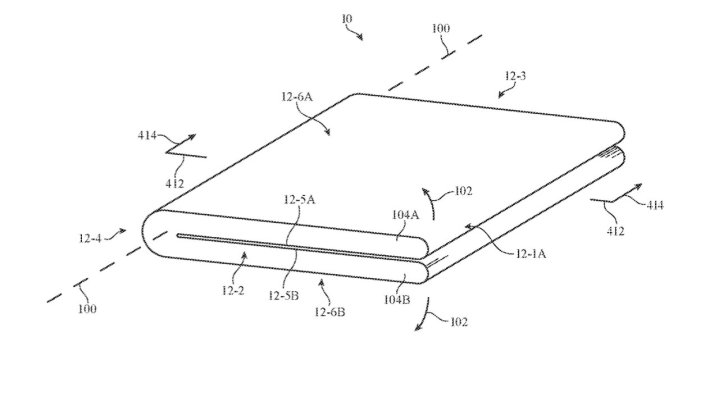
“It can be challenging to gather touch input from a user and to display images for a user efficiently,” says Apple. “For example, when a user supplies touch input to a touch screen display, the user’s hand may block images that are being displayed on the display. Buttons and other input devices may be used to gather input from a user, but this type of input device may not be as convenient and versatile as a touch sensor. Displays are sometimes not visible from certain directions and may be smaller than desired.”
The patent also makes a distinction between the edges that can be found on the current iPhone design and the curved edges on a potential folding device, which are referred to as “sidewalls.”

“The front wall and portions of sidewalls may be formed from a glass layer or other transparent member,” continues the patent. “A touch sensor layer and display layer may extend under the front and sidewall portions of the glass layer… [a] touch sensor layer may also extend under the opposing rear wall.”
It’s important to note that even though Apple has been granted these new patents that show a foldable device, it doesn’t guarantee that anything will come of it. Still, this looks like a promising development for a potential foldable iPhone.
iPhone Flip: cameras and other specs

An early 2021 report from Bloomberg’s Mark Gurman may throw a dash of cold water on leakers who claim they’ve already seen folding iPhone prototypes. According to Gurman, Apple’s development of a foldable iPhone hasn’t moved beyond the display, and the company “doesn’t yet have full handset prototypes in its labs.”
In about two years since that report, we’ve heard little more than the occasional confirmation that Apple is still in the early stages of experimenting with multiple designs.
There’s been no information available on what we’ll see regarding cameras, processors, and other features. That’s not surprising at this stage, as it’s likely Apple hasn’t even made these decisions yet. Of course, there’s tons of speculation, but that should all be taken with skepticism.
iPhone Flip: software

While most of the leaks and reports have focused on the hardware and design of a folding iPhone, Apple is also likely hard at work on the software side of things. Neither iOS nor iPadOS, as they exist today, will easily translate to a foldable design.
Given Apple’s meticulous attention to user experiences, the company is likely already tossing around ideas for a foldable version of its mobile operating system. Depending on what direction the iPhone Flip goes, we might see an entirely new derivative of iOS appearing on it.
iPhone Flip: release date

Although Apple is actively testing designs for one or more foldable iPhones, multiple sources have indicated that the company isn’t entirely sold on the idea yet. At best, a foldable iPhone is years away; at worst, we may never see one at all.
In his early 2021 report, Gurman made it clear that Apple hadn’t “solidified plans to actually launch a foldable iPhone.” In early 2022, MacRumors shared a message from leaker “Dylandkt” that SAID Apple still had concerns over the viability of foldable display technology and whether there was even a sufficient market for foldable smartphones.
In a Tweet thread that has since been deleted along with Dylandkt’s Twitter account, the leaker said that even though Apple is still working on different ideas, some within the company feel that the display technology hasn’t reached maturity.

Not surprisingly, sources claim that Apple is “playing the long game,” waiting to see how the technology progresses. It also wants to make sure there’s a long-term market for foldable smartphones and that this isn’t merely a passing fad that will diminish in a few years.
Still, in 2022, Kuo predicted that Apple would release its first foldable iPhone by 2023, targeted at mainstream consumers and forecasting that shipments could reach up to 20 million units in the first year. Kuo also expects Apple to use the most advanced display technology possible to give it “a long-term competitive advantage” and make it “the biggest winner in the new foldable device trend.”
However, in 2023, display analyst Ross Young, who has a pretty solid track record when it comes to anything concerning screen technology, shared that he’d been told by sources in the supply chain that a foldable iPhone won’t be appearing before 2025, and that’s a very preliminary estimate. “The company does not appear to be in a hurry to enter the foldable smartphone market, and it may even take longer than that,” Young noted in his February 2022 foldable/rollable display shipment and technology report. Kuo corroborated this timeline a few months later.
I expected Apple to launch a foldable iPhone as soon as 2024 in my reports last year, but now it's clear this prediction needs to be revised. I predict Apple may launch its first foldable product in 2025 at the earliest, which may be a foldable iPad or a hybrid of iPad & iPhone. https://t.co/HGIDPFvdar
— 郭明錤 (Ming-Chi Kuo) (@mingchikuo) April 1, 2022
It’s important to remember that 2025 is just one estimate in a long history of rumors and predictions. A few years ago, analysts and leakers predicted a foldable iPhone would arrive by 2021, which eventually became 2022, and then 2023. Now it’s 2025 or even 2026, but there’s no indication that this prediction will be any more reliable than the others.
So far, people haven’t begun abandoning the iPhone in droves to move to foldable devices. Apple still sells hundreds of millions of new iPhones annually — often without even trying. Until that slows down or competing devices like the Galaxy Z Flip 5 or OnePlus Open become overwhelmingly popular, Apple doesn’t have much reason to make an iPhone Flip a priority. If you’re an iPhone user who really wants a foldable smartphone in the near future, sadly, it looks like you’ll have to switch teams.
Editors’ Recommendations
